
Plaza de Mayo
(Corner of Avenida de Mayo and San Martín)
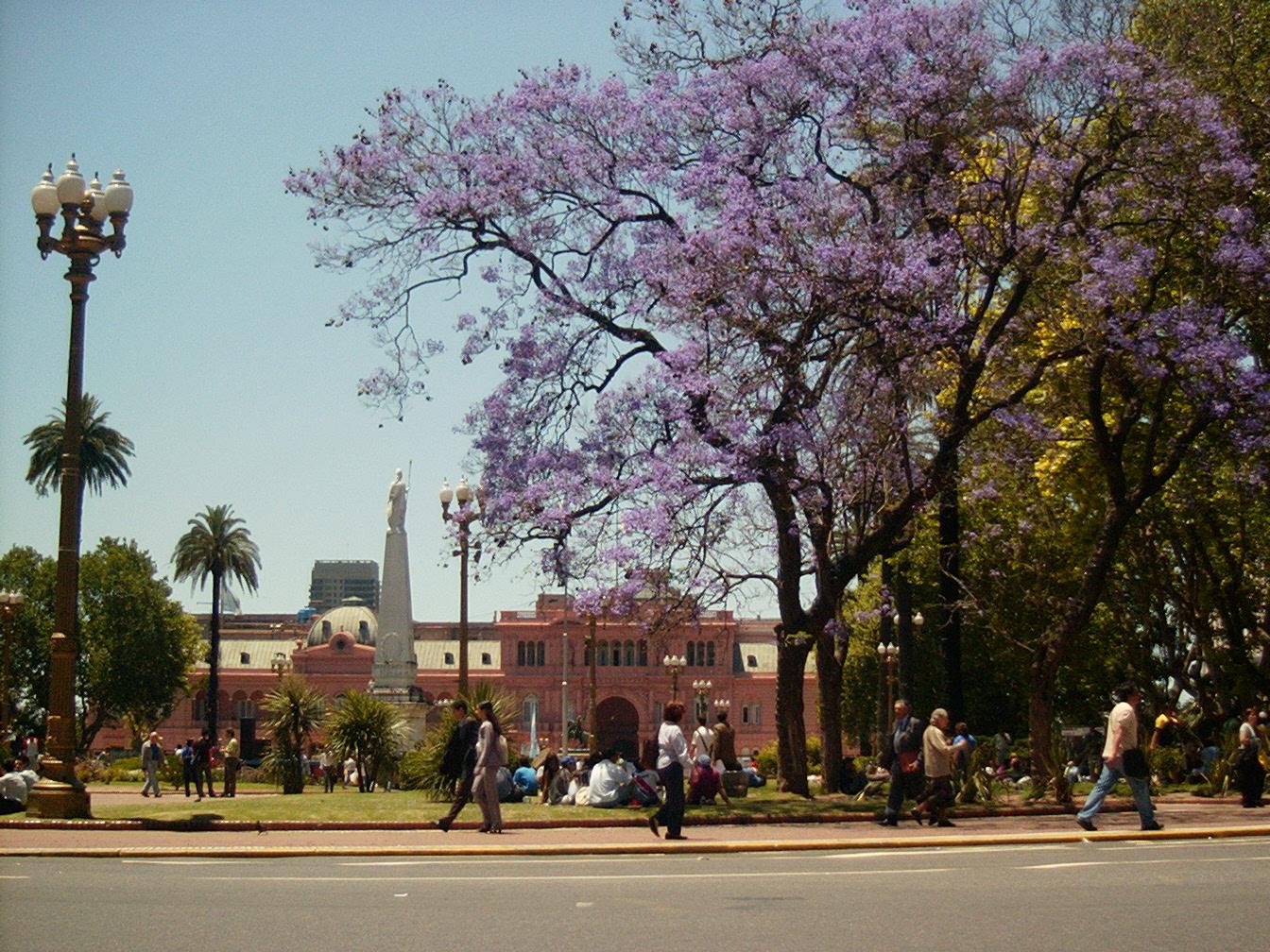 Even though it's on the extreme east coast, nobody would argue that Plaza de Mayo is the center of
Argentina. Just as the streets and subte seem to flow towards it, so does the money, patriotism,
and leadership of the nation. Located on this single city block are many of the important figures that
define this proud nation.
Even though it's on the extreme east coast, nobody would argue that Plaza de Mayo is the center of
Argentina. Just as the streets and subte seem to flow towards it, so does the money, patriotism,
and leadership of the nation. Located on this single city block are many of the important figures that
define this proud nation.
Unless your vision is very poor, the first thing you'll notice on Plaza de Mayo is La Casa Rosada
(the Pink House). This is the presidential mansion (much like the White House in the United States),
except that the president does not live here. Argentina is one of the few nations in the world where
this is so. But otherwise it functions like any other presidential estate. The balcony that extends
out over Plaza de Mayo has been used by many presdients throughout history to address the people
gathered in the plaza below, most notably Juan Perón and his wife, Eva. However, there is more to
do than stare at the pink house: Walk east on Hipólito Irigoyen (that's the street that goes down
the right side of the pink house as you face it), and when you reach the back corner of the pink house
you'll see the museum entrance. The museum is dedicated to the pink house and the history of
Argentina's presidency. Entrance is free. At the desk on your way in you can sign up to take a tour of
the pink house. This tour is also free, but when you sign up they will need to see your passport. I
highly recommend the tour.
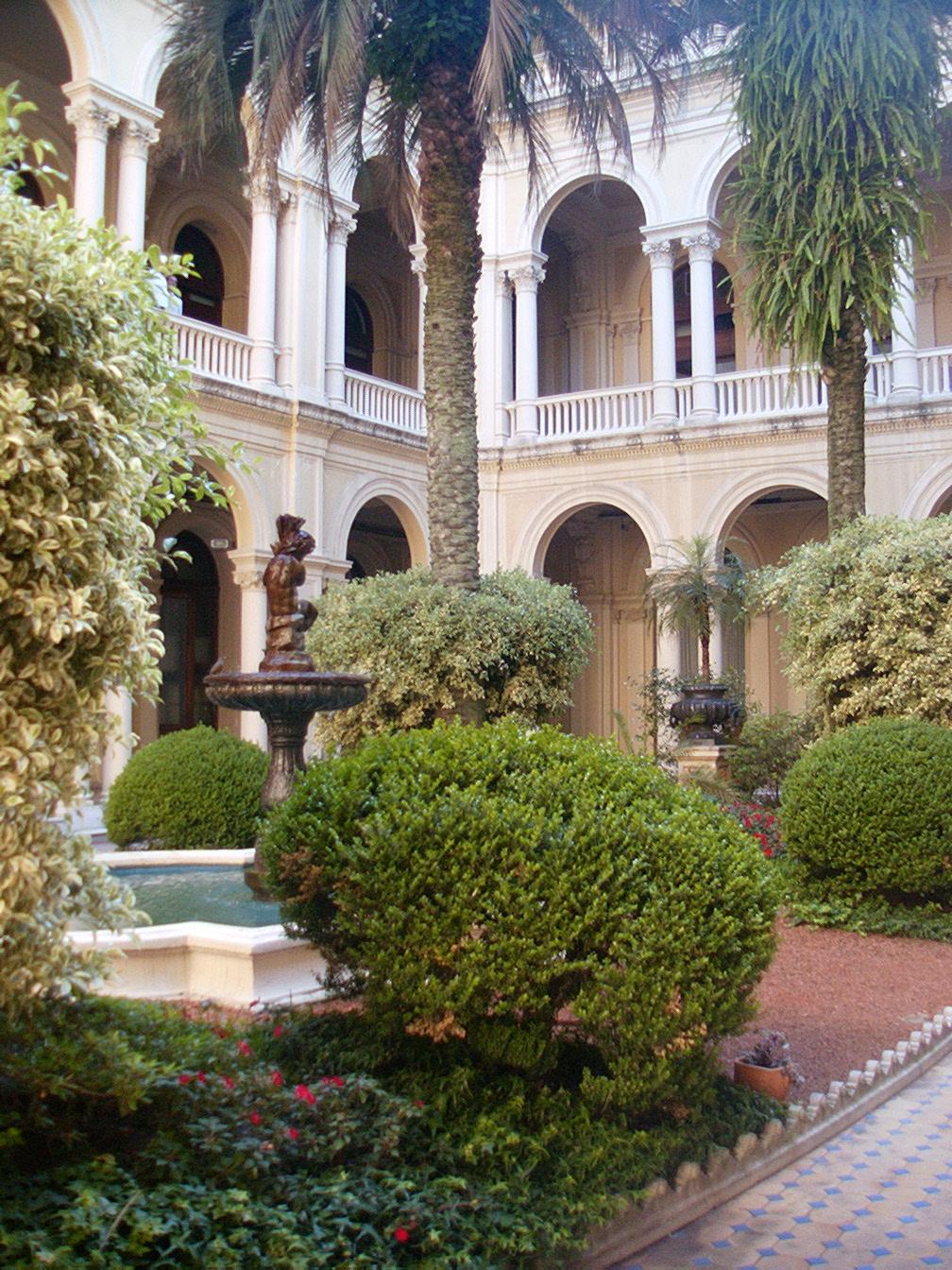 Going counterclockwise from the pink house, the next major attraction is the Catedrál
Metropolitana (Metropolitan Cathedral). This Greek-looking building is one of the oldest Catholic
churches in Argentina, and it is also the resting place of General José de San Martín, the
army leader who liberated Argentina (and several other countries as well) from Spain. An eternal flame
burns on the front of the Cathedral, and his tomb is located inside on the right. Like most cathedrals
in Argentina, it is still a working church and is used for worship, so be considerate when it comes to
taking video, photographs, and talking inside.
Going counterclockwise from the pink house, the next major attraction is the Catedrál
Metropolitana (Metropolitan Cathedral). This Greek-looking building is one of the oldest Catholic
churches in Argentina, and it is also the resting place of General José de San Martín, the
army leader who liberated Argentina (and several other countries as well) from Spain. An eternal flame
burns on the front of the Cathedral, and his tomb is located inside on the right. Like most cathedrals
in Argentina, it is still a working church and is used for worship, so be considerate when it comes to
taking video, photographs, and talking inside.
Continuing counterclockwise around Plaza de Mayo, the next landmark you'll see is Cabildo, a white
colonial-style building directly opposite the pink house. Originally much larger, this is what remains
of the building where the government of Argentina was first organized. It served as the center of
government of the city of Buenos Aires for a long time, but now it houses a museum.
In addition to plenty of statues and monuments to San Martín and the May Revolution, you'll notice
hundreds of pigeons wandering the plaza. They are there on purpose, as a symbol of peace. In fact,
Porteños call them palomas (doves). There are usually a few people selling pigeon food
around the plaza at 4 bags for AR$1. You can coax the pigeons to eat out of your hand, which makes for
a good photo op. The rest of the buildings around Plaza de Mayo are government buildings and banks,
which isn't surprising since most of the nation's government and banking are centered here.
Helpful Tip: Protests are an almost daily event in Buenos Aires since the economic collapse, and
most of these marches end up at Plaza de Mayo. To make sure you avoid the noise and crowds that come
with the protests, try to visit Plaza de Mayo in the morning.
Teatro Colón
(Corner of 9 de Julio and Tucumán)
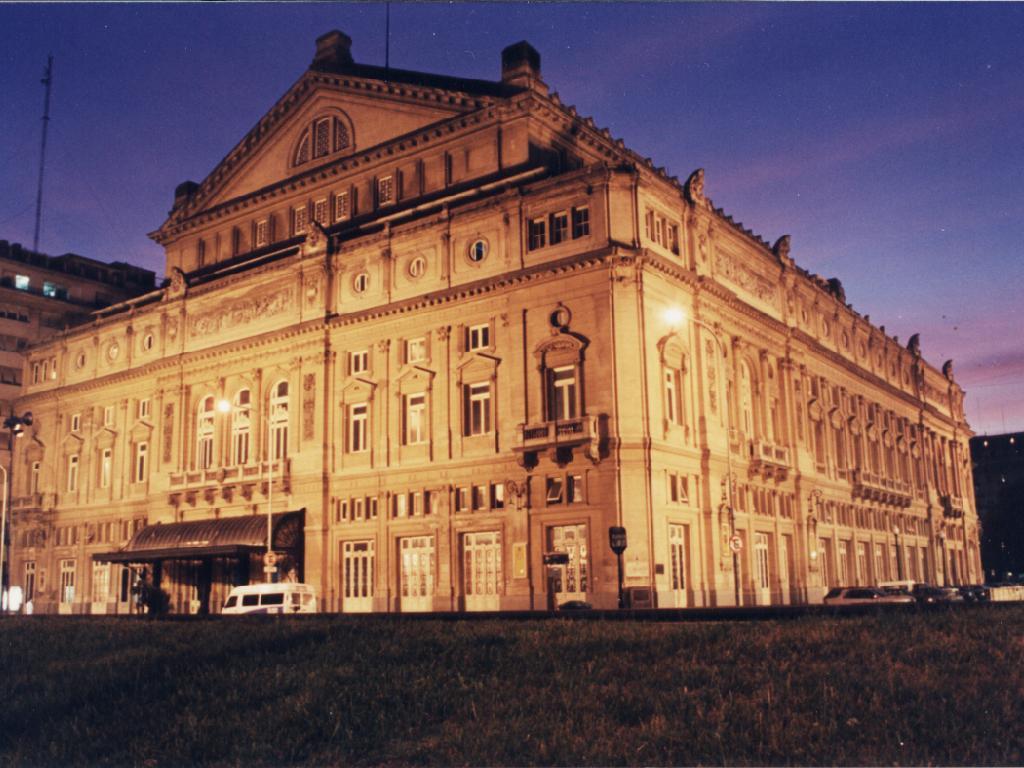 No trip to Buenos Aires is complete without at least one stop at the Teatro Colón. It is regarded as
one of the finest opera houses in the world. Past performers and conductors have included Chopin,
Strauss, Haydn, Pavarotti, Domingo, just to name a few. It is one of the most acoustically perfect
buildings in the world, making it ideal for all of the performing arts.
No trip to Buenos Aires is complete without at least one stop at the Teatro Colón. It is regarded as
one of the finest opera houses in the world. Past performers and conductors have included Chopin,
Strauss, Haydn, Pavarotti, Domingo, just to name a few. It is one of the most acoustically perfect
buildings in the world, making it ideal for all of the performing arts.
While the theater appears to be large from the street, the majority is actually underground. To see
this area, you will need to take the guided tour (Spanish link). The
tour covers the history and architecture of the building itself, as well as a discussion about how the
theater puts on world-class productions. The tour will be one of the highlights of your trip to Buenos
Aires. The tour costs about AR$10 per person. There is a schedule posted on the link above. A few
tours each day are given in English, but my advice is to take the tour in Spanish and have somebody
translate for you because my experience is that the tour is more informative in the guides' native
language. Tickets are sold in the main lobby which you actually enter from what appears to be the back
of the theater, located on Cerrito. Reservations are accepted.
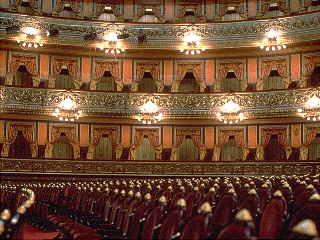 Another opportunity to take advantage of is to attend a performance at the theater. The theater's
selection of operas, ballets, and symphonies runs year round with only enough time between shows to
change the set. You can see what's playing while you're in Buenos Aires by checking the theater's calendar
(Spanish link). Even if you're not an opera buff, attend a show anyway since this is a
once-in-a-lifetime opportunity to hear some of the world's best musicians and singers. Tickets cost
between roughly AR$20 and AR$300 (conversion). The ticket booth (which is hard to find) is
located under the theater, with the entrance off of Tucumán. Please note that the theater does not
accept credit cards. You should be OK wearing business casual to the theater, but don't be surprised to
see plenty of well-to-do porteños wearing tuxedos in their private boxes and front-row seats.
Another opportunity to take advantage of is to attend a performance at the theater. The theater's
selection of operas, ballets, and symphonies runs year round with only enough time between shows to
change the set. You can see what's playing while you're in Buenos Aires by checking the theater's calendar
(Spanish link). Even if you're not an opera buff, attend a show anyway since this is a
once-in-a-lifetime opportunity to hear some of the world's best musicians and singers. Tickets cost
between roughly AR$20 and AR$300 (conversion). The ticket booth (which is hard to find) is
located under the theater, with the entrance off of Tucumán. Please note that the theater does not
accept credit cards. You should be OK wearing business casual to the theater, but don't be surprised to
see plenty of well-to-do porteños wearing tuxedos in their private boxes and front-row seats.
The Temple
(Richieri Freeway at Puente 13)
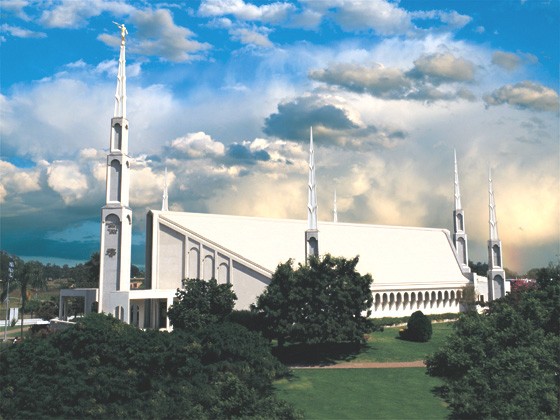 As you leave the airport, the temple is the first landmark you'll see (about 10 miles up the road on your left). You'll drive within a few yards of it. It's too close and you've traveled too far to not stop at the temple.
As you leave the airport, the temple is the first landmark you'll see (about 10 miles up the road on your left). You'll drive within a few yards of it. It's too close and you've traveled too far to not stop at the temple.
The Buenos Aires temple is one of the older temples when you look at how many have been built in just the last few years. It was dedicated in 1986 by Elder Thomas S. Monson. The Buenos Aires temple district is the entire nation of Argentina, an area roughly 1/3 that of the United States. Getting there can be a long difficult journey for many Latter-day Saints. I can only imagine their emotions when they finally see the Angel Moroni shining among the trees.
For those that want to do a session, the temple schedule is provided at the Church's official website. If you can't do a session, it's still a nice place to walk around and enjoy the grounds. Like all other temples, the grounds are immaculate. The temple grounds also support a hostel, a Missionary Training Center, and a distribution center.
Inside the temple, clothing rental is available and there is also a cafeteria. For those who don't want to do a session in Spanish, translation headsets are available for several languages. The temple workers are very friendly and accomodating to non-Spanish speakers, and they will do whatever they can to help you feel the spirit of the Lord's house.
Helpful Tip: Since the temple is between the airport and the city, I like to stop there on the way to my hotel. A remis will take you there for a reduced fee and when you're done, the receptionist at the hostel will call another one to take you to your hotel. As far as your luggage goes, the receptionist has always been nice enough to give me a place to put my bags, although they're not obligated to do so. The receptionist has also given me a place to change into appropriate clothing for the temple. Don't forget your temple recommend.
Fútbol
(Going on everywhere)
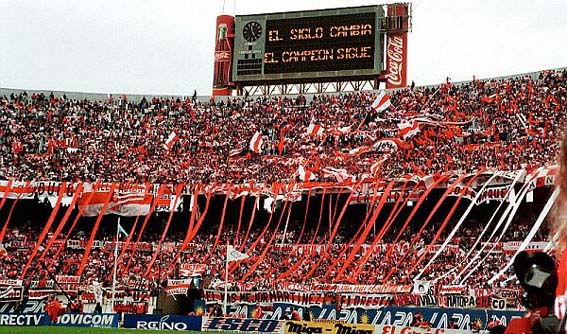 Argentines are passionate about a lot of things, but they are absolutely obsessed with soccer. Most
foreigners don't understand the depth of their obsession, but here is an example: There are no cities in
the U.S. with more than 2 professional teams in any single sport. In contrast, Buenos Aires has no less
than 16 soccer teams in the 1st division at any one time. Argentine soccer has a rich history.
Organized professional soccer has been played for over 100 years. Teams are fielded by athletic clubs
in the various barrios of Buenos Aires, hence the reason all team names start with the words
Club Atlético. In the early days, people cheered for the team that represented the club in
their neighborhood. While each team's fan base is more spread out now, this history does explain a
common phrase you'll hear in Argentina: De qué cuadra sos?. This means "what team do you
cheer for," but it literally means "what block are you from?" The largest and most popular teams are
River Plate and Boca Juniors, and their rivalry runs deep. Fortunately, an encounter between a River
fan and a Boca fans usually only results in some good-natured teasing. Of course, all differences are
laid aside when the national team plays. Argentina won the World Cup in 1986 behind their star Diego
Maradona.
Argentines are passionate about a lot of things, but they are absolutely obsessed with soccer. Most
foreigners don't understand the depth of their obsession, but here is an example: There are no cities in
the U.S. with more than 2 professional teams in any single sport. In contrast, Buenos Aires has no less
than 16 soccer teams in the 1st division at any one time. Argentine soccer has a rich history.
Organized professional soccer has been played for over 100 years. Teams are fielded by athletic clubs
in the various barrios of Buenos Aires, hence the reason all team names start with the words
Club Atlético. In the early days, people cheered for the team that represented the club in
their neighborhood. While each team's fan base is more spread out now, this history does explain a
common phrase you'll hear in Argentina: De qué cuadra sos?. This means "what team do you
cheer for," but it literally means "what block are you from?" The largest and most popular teams are
River Plate and Boca Juniors, and their rivalry runs deep. Fortunately, an encounter between a River
fan and a Boca fans usually only results in some good-natured teasing. Of course, all differences are
laid aside when the national team plays. Argentina won the World Cup in 1986 behind their star Diego
Maradona.
Unfortunately, soccer around the world has been scarred by fan violence in recent years. But the good
news is that Argentine soccer has remained relatively peaceful. A few years ago, it looked like
violence was going to become a major problem, but then the government made one of history's best laws:
Alcohol was banned inside stadiums. Today there are only occasional fan problems, and most of these
occur on the streets, not in the games. Still, just to be on the safe side, sit in the more expensive
seats, be aware of whose fans you're sitting with, watch the color of your clothing, and avoid rivalry
games. I would recommend a national team game (where everybody cheers for Argentina) or a game
featuring a visiting team from out of town.
There are two types of seats at soccer games: Popular and platea. The platea seats are
better for viewing the game, more comfortable, less out-of-control, and more expensive. But expensive
is a relative term; the best platea seats are still under AR$50. If you're unsure about going to a
game, you have another option. There are businesses that take tourists to games for around AR$100.
While the price is a bit higher, it buys you transportation to and from your hotel, platea seats, and
sometimes you even get some food or a souvenier. You'll be under the watchful eye of a local who knows
local soccer inside and out so you can enjoy the game (and the spectacle in the stands) instead of
wondering if you're sitting in the right place.
Recoleta
(Corner of Junín and Vicente López)
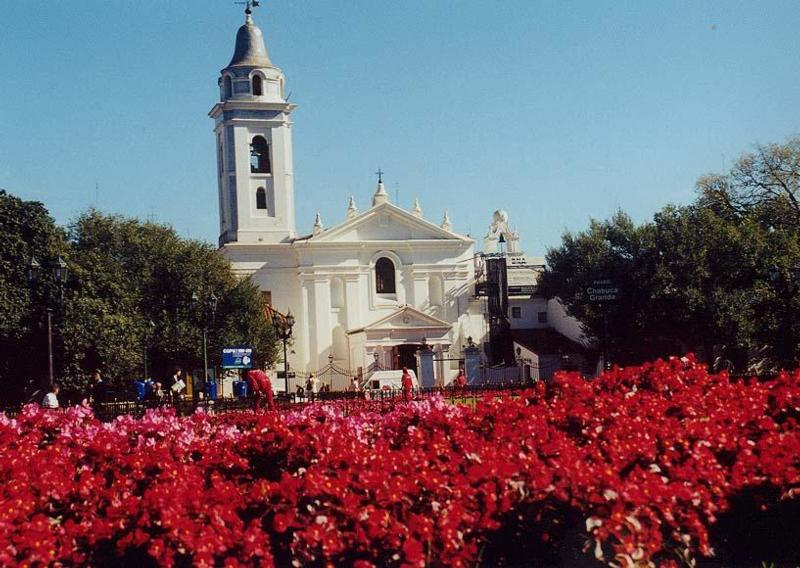 Recoleta is one of the 52 barrios in Buenos Aires, so it's not limited to one corner as the
address above implies. This intersection will land you near the most visited area. There are several
things to see and do in Recoleta, including sightseeing, shopping, and eating. See the page about restaurants
for more information on eating in this neighborhood.
Recoleta is one of the 52 barrios in Buenos Aires, so it's not limited to one corner as the
address above implies. This intersection will land you near the most visited area. There are several
things to see and do in Recoleta, including sightseeing, shopping, and eating. See the page about restaurants
for more information on eating in this neighborhood.
The most interesting area starts when you reach the large plaza that you will see on your city map in
the vicinity of the intersection above. This plaza is surrounded by restaurants, and there is a large
banyon tree off to one side. This is a great place to stop & enjoy an helado (ice cream) on a
hot day. Make sure you visit Recoleta on a Saturday morning because there is a giant outdoor market
where you can buy almost anything (cash only, of course), including several things you won't find
anywhere else.
Standing in the plaza, the first thing you will notice is the large white church to the north. This is
La Iglesia Nuestra Señora de Pilar (Our Lady of Pilar Church). I don't know much about the
history of this church, but I do know that the inside is worth a look. Once again, this is a
functioning church, so please be respectful inside.
By far the largest draw in Recoleta is the cemetery. This above-ground collection of mausoleums fills
an entire city block, and no less than 70 of them are national historic sites. Almost every Argentine
of any importance is "buried" here. To qualify for a final resting place in Recoleta, you have to be
three things: Argentine, very important, and dead. The most visited tomb is that of La Familia Duarte,
where Eva Duarte de Perón rests. But beyond the former first lady's grave, the cemetery offers a
unique insight into Argentine culture. You won't get far into the cemetery before you realize that most
plots have windows so people can see the coffins inside. You will also see chairs. I had been through
the cemetery several times before I realized why you would need a chair in a tomb: So that the living
can sit inside and spend time with the deceased, and yes, people actually do that. Also, the
patriarchial aspect of society is evident in Recoleta. For example, Eva Perón is buried with her
father. Where is her husband, the former president? Across town, in Chacarita cemetery, buried with
his father.
Helpful Tip: If you're allergic to cats, watch out. There are cats everywhere inside the
cemetery. Nobody has been able to give me an answer about why there are tons of cats around.
Helpful Tip: The one bad thing about Recoleta is there's no subte stop nearby. To get
there, you can either take a bus, take a remis, or get as close as you can with the subte and
walk the rest of the way. I prefer the latter because random streets in Buenos Aires are so beautiful.
Stop at a kiosco (convenience store) and get an alfajor (tasty little dessert thing) and a
gaseosa (soda) to tide you over while you walk.
Tango
(At a number of tango shows)
 If you asked random people around the world what Buenos Aires is best known for, I bet a majority would
say tango. Tango around the world comes in many shapes and forms, but the center of the tango universe
is found in the old barrios of Buenos Aires such as San Telmo, La Boca, Nueva Pompeya, and
Monserrát. What most people don't understand is that tango is not just a dance; tango is also a
unique style of music and singing. There is as much uniqueness in the music itself as there is in the
dance. However, at least as far as my tastes are concerned, the music means little without the
dance.
If you asked random people around the world what Buenos Aires is best known for, I bet a majority would
say tango. Tango around the world comes in many shapes and forms, but the center of the tango universe
is found in the old barrios of Buenos Aires such as San Telmo, La Boca, Nueva Pompeya, and
Monserrát. What most people don't understand is that tango is not just a dance; tango is also a
unique style of music and singing. There is as much uniqueness in the music itself as there is in the
dance. However, at least as far as my tastes are concerned, the music means little without the
dance.
The tango dance is clearly a reflection of the people of Argentina. Regardless of the subject of the
music, tango absolutely drips with passion. But even with music and dancing intended to show anger
between the dancers, you can't help but notice a union between the partners. It's difficult to put into
words, but it's almost like the two become one, even if conflict is evident. Rather than try to
describe it any further, I think you should just go see it for yourself.
In your travels through the city, you may run into tango without even meaning to. It seems that
semi-random tango breaks out occasionally on streets and in plazas. I've seen it on Calle Florida, in
La Boca on Caminito, and in Recoleta, but never with any regularity. If this happens to you, take some
pictures and consider yourself lucky. The only way to guarantee that you'll see tango is to go to a
tango show. Some shows are larger, more Broadway-style affairs, while others are smaller, more like you
would see in a bar in the 1930's. I enjoy both types, so I can't recommend one over the other. You'll
just have to decide which appeals to you more. The concierge at your hotel can point you in the right
direction and even make reservations for you (reservations are always required). These shows are rather
expensive (around AR$100), but it's well worth the money. A few shows provide transportation to and
from your hotel if you'd like it.
For those that prefer to experience tango by doing rather than seeing, there are quite a few businesses
in town that offer tango lessons. Most lessons are at night, and they are mostly in Spanish, but I've
heard you can pick up basic tango pretty quickly. However, you'll soon discover that the professionals
make it look easier than it is, and advanced tango actually requires some very athletic feats.
Helpful Tip: Many tango shows offer (or automatically include) dinner as a part of the cost.
I've never had a good meal at a tango show, so if you have a choice to include dinner or not, I
recommend you go to the show without the dinner and eat somewhere else.
La Basilica de Luján
(About 30 km West of Buenos Aires: Take Subte Line A to Plaza Miserere, then the electric train to
Moreno, then the gas train to Luján, then a taxi to the Basilica)
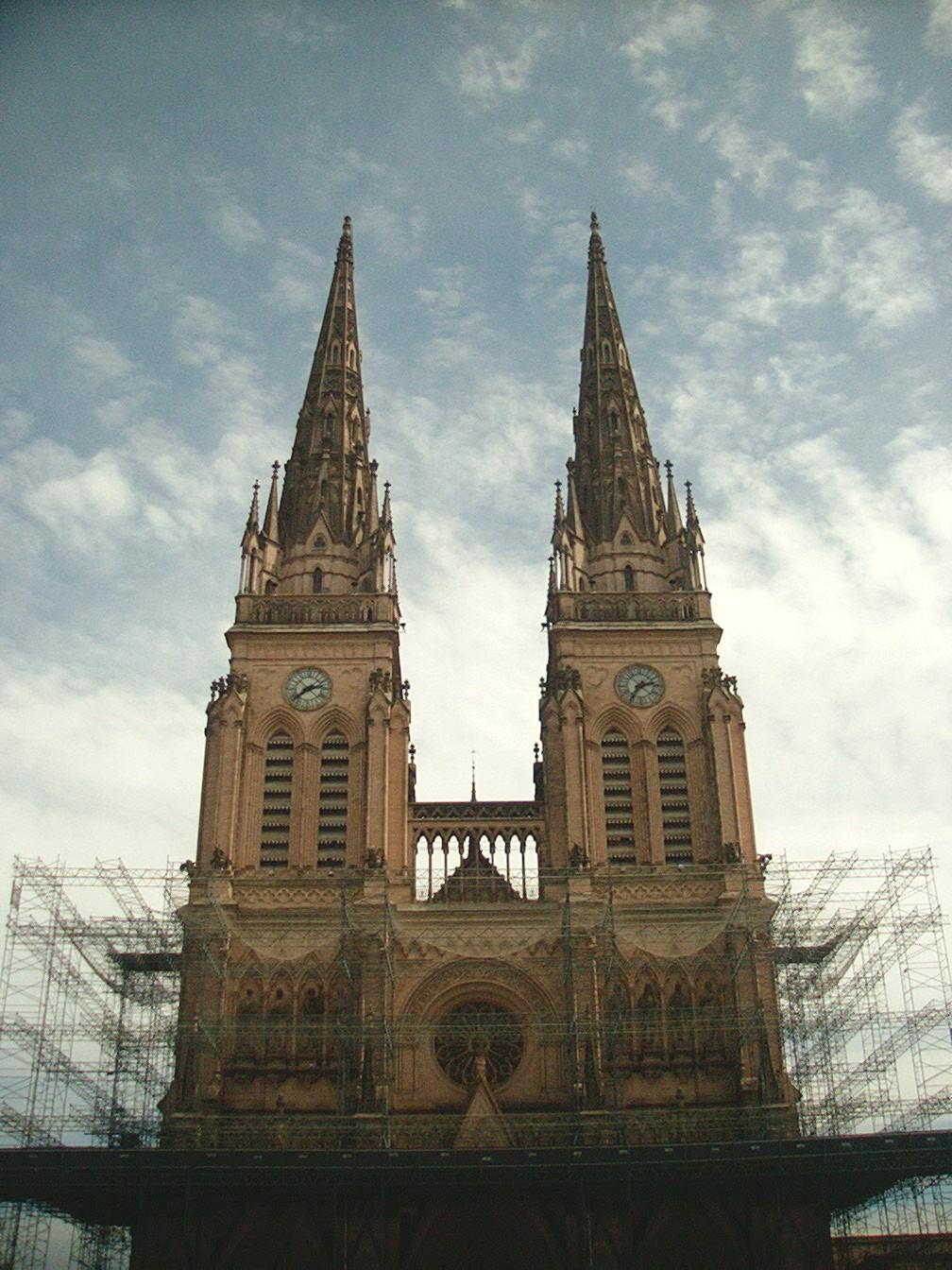 If Latter-day Saints in America have Temple Square, then Catholics in Argentina have La Basilica de
Luján. If this magnificent cathedral and the huge square surrounding it seem out of place in a
small town like Luján, it's because the cathedral (and the statue of the Virgin inside) were
supposed to be built in the city of Rosario. Local legend has it that the statue was being transported
by wagon to Rosario when the oxen decided they would go no further than this place and the caretakers
decided it was a sign that this was where the basilica should be built. It is now regarded as the
center of the Catholic Church in Argentina. Every year about a million people make a pilgrimage on foot
to Luján from Buenos Aires, which might explain why there is so much open space around the
building.
If Latter-day Saints in America have Temple Square, then Catholics in Argentina have La Basilica de
Luján. If this magnificent cathedral and the huge square surrounding it seem out of place in a
small town like Luján, it's because the cathedral (and the statue of the Virgin inside) were
supposed to be built in the city of Rosario. Local legend has it that the statue was being transported
by wagon to Rosario when the oxen decided they would go no further than this place and the caretakers
decided it was a sign that this was where the basilica should be built. It is now regarded as the
center of the Catholic Church in Argentina. Every year about a million people make a pilgrimage on foot
to Luján from Buenos Aires, which might explain why there is so much open space around the
building.
The interior of the church (yes, you can go in, but once again, please be respectful of worshippers as
this church is in use day and night) is one of the most ornate and beautiful that you will ever see.
I've always thought the blue and white banners on the ceiling were a nice touch. But on my first visit,
I was surprised at the Virgin statue, the centerpiece of all this magnificence: It is barely two feet
tall.
People have asked me about the sinister stories regarding the Basilica that make their way around the
mission, so let me address that here: Luján is in the West mission, so throughout my mission I
heard lots of stories about the construction of the basilica, the symbolism of some of the features of
the building, and its history. If you've been called to serve in the mission, I have no doubt that
you'll hear stories as well. I've never found any official statements or evidence to back up the
rumors, so you won't find any of them published here. There are some entertaining stories to be sure,
but I would take them (and all other "missionary lore") with a grain of salt. Sticking with what we
know to be fact, there's a big, beautiful, old church in the town of Luján, and it's worth the
trip in my opinion.
Other Attractions
Congreso(Corner of Callao and Rivadavia) - Argentina's government is modeled after the
government of the United States, complete with a bicameral legislature. Even the capitol building
itself is modeled after the Capitol in Washington. You can feed pigeons here just like at Plaza de
Mayo, but it's not as popular (or crowded).
Tribunales (Corner of Lavalle and Talcahuano) - The third branch of government, the supreme
court, is housed in Tribunales. Lately it seems the old building is falling into disrepair, so it's
probably not worth a special trip. But note that it is right behind Teatro Colón, so when you're
there, stop by Tribunales and have a look.
Jardín Botánico (Corner of Sarmiento and Santa Fe) - Right in the middle of the
barrio of Palermo is a large botanical garden. It's a nice stroll on a hot summer day when the flowers
are in bloom. Just like in Recoleta cemetery, there are cats everywhere.
Museo Nacionál de Bellas Artes (Av. del Libertador 1473) - Buenos Aires has a world-class
fine arts museum. There is a nominal entrance fee, but the museum contains original works by many
famous artists including Picasso, Van Gogh, Degas, and Monet.
El Obelisco (Corner of 9 de Julio and Diagonál Norte) - This giant obelisk in the middle of
the street is a monument to the independence of Argentina. Americans will notice how similar it is to
the Washington Monument in Washington, D.C. You will probably go by it in passing several times, so you
probably don't need to plan a special visit. Also, it's in the middle of Av. 9 de Julio, the world's
widest street. This area is a good place to take pictures, especially at night when the lighted
billboards are on.
Parque 3 de Febrero (Corner of Av. del Libertador and Dorrego) - I'm guessing that this is the
largest park in Buenos Aires, and it's quite beautiful as well. This park is home to Argentina's
largest stadium, Estadio Monumentál (home of the River Plate soccer team). This is also where
Elder Melvin J. Ballard dedicated South America for the preaching of the gospel in 1925. This is also a
great place to find a pasaperros, a professional dog walker who may be walking up to 20 dogs at a
time. It's an interesting sight.
Plazas (Look at a map) - One of my favorite things to do in Buenos Aires is to visit random
plazas. Just find a green block on your map of Capital Federal and go there. Buenos Aires is known for
its beautiful green spaces, and I've never been disappointed by a plaza on one of these adventures. As
a rule of thumb, if the plaza can be found on your map of the downtown area, it's probably in a good
neighborhood and pretty safe to visit.
Conclusion
These are just a few ideas of things you can do in Buenos Aires, mostly based on my personal experience.
There are undoubtedly many more things to do but I haven't had the luxury of doing them. If I've
missed something obviously worthwhile, send a comment to the webmaster and we'll try to get it included.
Table of Contents
Visiting Buenos Aires: Main Page
Where To Stay
Where To Eat
Things To See & Do
Shopping
Transportation
Paying
B.A. Today
Useful Phrases
|

